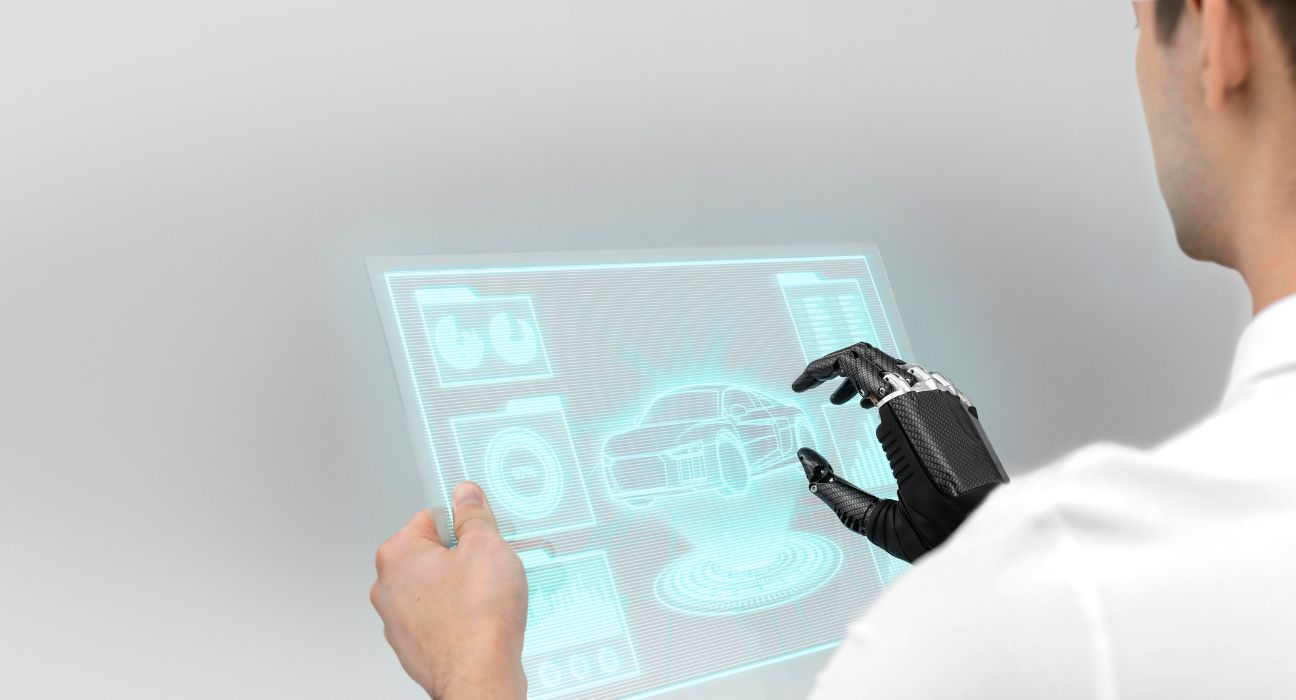How to Build a Vehicle Maintenance App: A Complete Guide

- Deval Patel

- Nov 3, 2025
Do you remember the days when people used to carry a small notebook in his glove compartment to write about the changes of oil, fuel mileage or service date? In the year 2025, the same logbook has been completely digitalized. Nowadays a vehicle maintenance app is the best friend of the modern driver, as it helps a car owner and a fleet manager to take care of their vehicles and keep them in good condition without any scratches.
Such applications are not only digital planners but also smart ones that remind the user of his/her next services, trace spending, register fuel consumption, and even tell him/her when his/her parts may malfunction. With the increase in car ownership in the world and the growing smartness in the fleets, the demand is skyrocketing in such apps.
This is the guide that will take you through the entire process of creating a vehicle maintenance app about what it is and who it will serve, how to plan features, the right tech stack, and cost of development estimation. You can be an entrepreneur or an automotive startup or a software innovator, and this guide will help you to make your idea come alive.
Understanding the Vehicle Maintenance Apps
A vehicle maintenance application is a digital application that is aimed at easing vehicle maintenance. It assists users to follow such important information like fuel logs, servicing schedules, insurance renewals, and repair histories. Imagine it as a mobile car helper that helps to keep your car healthy, efficient, and safe on the streets.
Such applications usually enable people to:
- Maintenance of the tracks (oil change, rotating the tires, checking)
- Control fuel usage and costs.
- Get service notifications and alerts.
- Keep important documents such as registration, insurance and warranty.
- See diagnostics information (in sophisticated applications with OBD support)
It has several types of users:
- These are individual car owners who prefer maintaining their vehicles effectively.
- Fleet operators dealing with dozens or hundreds of cars.
- Car repair shops and dealerships that record customer records.
There are a few examples in the real world such as AUTOsist, since it is dedicated to fleet management; Simply Auto, an application dedicated to assisting with a personal vehicle log; and Drivvo, an app that integrates fuel monitoring and service notifications.
These apps have demonstrated that car care applications are not limited to hobbyists; they are the key to convenience in the present day.
Why Develop a Vehicle Service App in 2025
The automobile sector is becoming digital and maintenance applications are at the center of it. The worldwide computerized vehicle market is projected to reach more than $250 billion in 2028, and there is a rising demand to develop software that helps to improve safety, effectiveness, and user comfort.
The demand is high regarding both B2C (individual drivers who seek the peace of mind) and B2B (fleet operators, logistics companies, and garages) customers. Companies require effective technologies that can help minimize downtime, monitor expenses, and streamline maintenance plans - and that is where these applications will help.
New and old car manufacturers are taking advantage of this. As EVs (electric vehicles) become common and vehicles produce more real-time data than ever before, 2025 would be the right time to develop a smart vehicle maintenance app to combine IoT, AI, and predictive maintenance.
Major characteristics of a vehicle maintenance application.
To create a terrific vehicle maintenance app, it is necessary to balance between the easy-to-use interface and the mighty management solutions of garage and fleets. We have to take apart the basic and advanced features.
User based features
- Vehicle Profile Setup: Users ought to be in a position to add a vehicle or vehicles with information such as model, make, year, VIN, and license plate. This is the basis of customized service notifications and information monitoring.
- Service Alerts and Notifications: Notifications Auto-reminds the user when it is time to change oil, replace filters, or tire changes -depending on the number of miles covered or number of hours.
- Fuel Consumption Tracking: Allow users to take note of fuel fill ups, monitor their mileage and determine their fuel economy in the long run in order to encourage efficient driving behavior.
- Service History Logs: An electronic logbook where all the repairs, services and inspection performed on the vehicle are registered.
- Expense Tracking: Monitor fuel, repair, insurance, and Tolls expenditure - assist users in knowing the total cost of ownership.
- Document Storage: Keep insurance documents, emission certificates, warranties, and registration in a secure place.
- Emergency Assistance: Include roadside assistance like the immediate connection to towing services or crisis hotlines.
Admin / Garage-Side Features
- Customer Management Dashboard: Garages and workshops will be able to access details of the customers, service history and run-in jobs.
- Scheduling and Reminders of the services: Send automatic messages to the customers whenever their service is due or parts arrive.
- Payment Integration: Allow customers to use the application to pay a service or subscription fee.
- Push Notifications: Notify the users of service offers, reminders or jobs done.
- Analytics & Reports: Offer maintenance schedule, frequent problems, and prices - these are handy to both individuals and garages.
Optional Advanced Features
- IoT/OBD Integration: Connect to On-Board Diagnostic (OBD) systems to automatically access real-time data on the car, such as engine conditions, and error codes.
- Maintenance Prediction based on AI: Apply machine learning to the driving behavior and determine when maintenance will be required.
- GPS Tracking: Assist fleet managers check the position and performance of vehicles.
- Chat or Support Integration: Provide in-application interaction between customers and service providers to have real-time updates.
Procedure to develop a Vehicle Maintenance Application.
With that said, we now know what a powerful vehicle maintenance application would consist of and now we are going to take a look at the development process of it end to end - concept to launch.
Step 1: identify your target users and fundamental objectives
Defend your app: Before you write a single line of code, define your app. In most cases, individual car owners are interested in a simple and easy-to-use application, which would allow them to keep track of the dates of services and costs, and fleet operators want highly sophisticated analytics and automatic maintenance monitoring. Instead, garages or dealerships aim at customer relationship management and scheduling. After determining the main audience, explain the issues your app will address the missed maintenance appointments, inaccurate records, high cost of repair, etc. Such learnings will influence how your app is designed and what features it will contain.
Step 2: Design App Structure and App Features.
Then, draw the scheme and flow of your app. Visualize the way users will navigate the app - starting with registering their accounts and adding their vehicles to getting reminders, recording the fuel data, and monitoring the expenses. List the features and design the user journey of the app in wireframing software such as Figma or Sketch. This aids you in detecting any gaps, redundancy, and also you are certain that each screen has a definite purpose, before you can actually get to the development stage.
Step 3: Select the optimal Tech Stack.
The choice of the appropriate technologies guarantees the high-performance and efficient scaling of your app. It will also require APIs like Google maps to navigate, Stripe or Razorpay to take payments, and OBD APIs to interface with vehicles. In Ouranos Technologies, we frequently rely on a tech stack that is based on React Native, Node.js, and PostgreSQL and provides us with scaled-up, high-performance mobile apps.
Step 4: User Interface (UI/UX) Design.
Design is the point at which your app starts to be formed. The interface must be simple, user friendly and usability centered. Expect dashboards that can show important data such as mileage, reminders, and service history well. The users should be able to navigate safely even when they are on the move with high-contrast colors, legible fonts, and simple icons. Having a uniform look and feel among all the screens will likely create user trust and simplify the use of the app. Test your designs with the potential users before development commences in order to obtain feedback and improve the experience.
Step 5: MVP (Minimum Viable Product) creation.
Begin with Minimum Viable Product (MVP) - the version of your app which has only the necessary functions like setup of two vehicles, maintenance notifications, service history, and expenses. Do not go heavy with the sophisticated features at this point. It is aimed to prove your idea with real users and collect feedback. After the launch of the MVP, study the behavior and usage of users to determine what works and what requires improvement before proceeding to full-scale launching.
Step 6: Test & Debug
Testing plays an important role in ensuring performance of the app. Perform functional testing to confirm the functionality of all the buttons, forms and reminders. This should be followed by performance testing to determine speed, loading time and responsiveness with varying network conditions. Lastly, usability testing is useful in assuring people that they can easily use the app. Early detection of bugs and errors can save on time and money in later development by using tools such as Firebase Crashlytics or Appium.
Step 7: Launch & Gather Feedback
The app is ready for a soft launch after the completion of all testing phases. Launch the app to a limited number of users in Google Play store or App store and find out how it is used by people. Track data to view what features the users interact with most and what should be improved. Seek feedback with in-app surveys or support forms and use this information to develop the app and launch it on a larger scale. The more receptive you are to the initial reception, the higher your app will do in the market.
Step 8: Advanced Features Scale.
Once you have confirmed your MVP and have stabilized your performance, you can start to add more advanced features. Add AI and machine learning to bring in predictive maintenance, incorporate IoT and telematics to toothed-time diagnostics, or provide subscription plans to the fleet operators and garages. These can greatly increase functionality and increase your user base and add new revenue streams. This is the stage that your app is turned into a full-fledged vehicle management ecosystem.
Time and Cost to develop an app to maintain the vehicle.
Development of vehicle maintenance app will have a number of cost phases including design and release. The overall cost of UI/UX design can be between 3-8000 dollars, where frontend and backend development can be 10-50000 dollars based on the complexity. Another cost that is normally incurred when it comes to testing and quality assurance is an extra expenditure of $2,000 to 7,000 and also due to deployment and maintenance an extra expenditure of 1,000-5000 is incurred.
In sum, simple MVP can be about 15,000-25,000, whereas an application with IoT connections, analytics created on the dashboards, and AI-driven predictions can cost up to 60-80,000.
These numbers may differ greatly depending on a number of factors including the complexity of the apps, technology stack, location of the developer and the number of platforms (Android, iOS, or both). By collaborating with a reputable firm such as Ouranos Technologies, smart budgeting, scalability, and quality are guaranteed during the whole process.
Monetization Models
Vehicle maintenance app can be monetized in a number of ways:
- Freemium Model: Provide a free option with limited functionalities and offer more sophisticated resources such as analytics, cloud backups, or integrations with the Internet of Things.
- Subscription Plans: Perfectly suited to a fleet operator or garage - monthly or annual plans with different levels of pricing depending on the quantity of vehicles.
- In-App Purchases: In addition, users can buy add-ons like rich analytics, extra storage or premium support.
- Cooperation with Garages or Insurers: Team with auto service centers or insurance companies as a referral source or source of information.
- Advertisements: In the case of consumer-oriented applications, ads will help to generate further income, however, make sure that they are not intrusive and target automotive users.
A combination of two or more of these models would result in a sustainable stream of revenue whilst maintaining the app affordable to the users.
Trends of Vehicular Maintenance Apps.
The new breed of car maintenance applications will go much further than reminders and records. The following are the new trends that have emerged as part of the future:
- Predictive Analytics (AI/ML): AI will be applied to apps to identify failures before they occur saving the user time and money.
- EV Charging Networks Integration: With electric cars running the streets, the applications will monitor the battery status, charging time, and the locations of the charging points.
- Voice Assistants & Smart Cars: It will be possible to integrate with Alexa, Siri, or in-car voice systems to give hands-free commands, which will be perfect with driving safety.
- Connected Car APIs: Partnerships with automobile companies will provide apps with real-time access to vehicle data to diagnose vehicles and update them.
- Sustainability Tracking and eco-Driving: The users will be provided with information about fuel efficiency and carbon reduction.
Essentially, the vehicle care applications are turning into full digital car care ecosystems.
Conclusion
To develop a vehicle maintenance application in 2025 is not only a lucrative business concept, but a step to the future of intelligent mobility. The need to have such solutions is only increasing as car ownership increases, there is more development in development of IoT technology and increased awareness is created regarding the importance of having proactive maintenance.
With a clear vision, consideration of user needs, and a well-tested MVP, you will be able to create a platform that will indeed improve vehicle ownership experiences.
In case you have decided to develop a strong, scalable, and easy-to-use vehicle maintenance application, Ouranos Technologies will assist you with designing, developing, and launching one in order to make your idea go directly out of the drawing board and to the app store.

Latest Articles
Browse All Articles
- Other
- Nov 12, 2025
AI in Automotive Industry: Benefits, Use Cases & What's Next
Discover how AI is transforming the automotive industry, from smarter manufacturing and predictive maintenance to autonomous driving and connected vehicles.

- Other
- Nov 11, 2025
How AI is Reshaping ERP: Challenges, Opportunities, and Key Trends
Discover how AI is changing ERP, from smarter automation to predictive insights and business efficiency.



